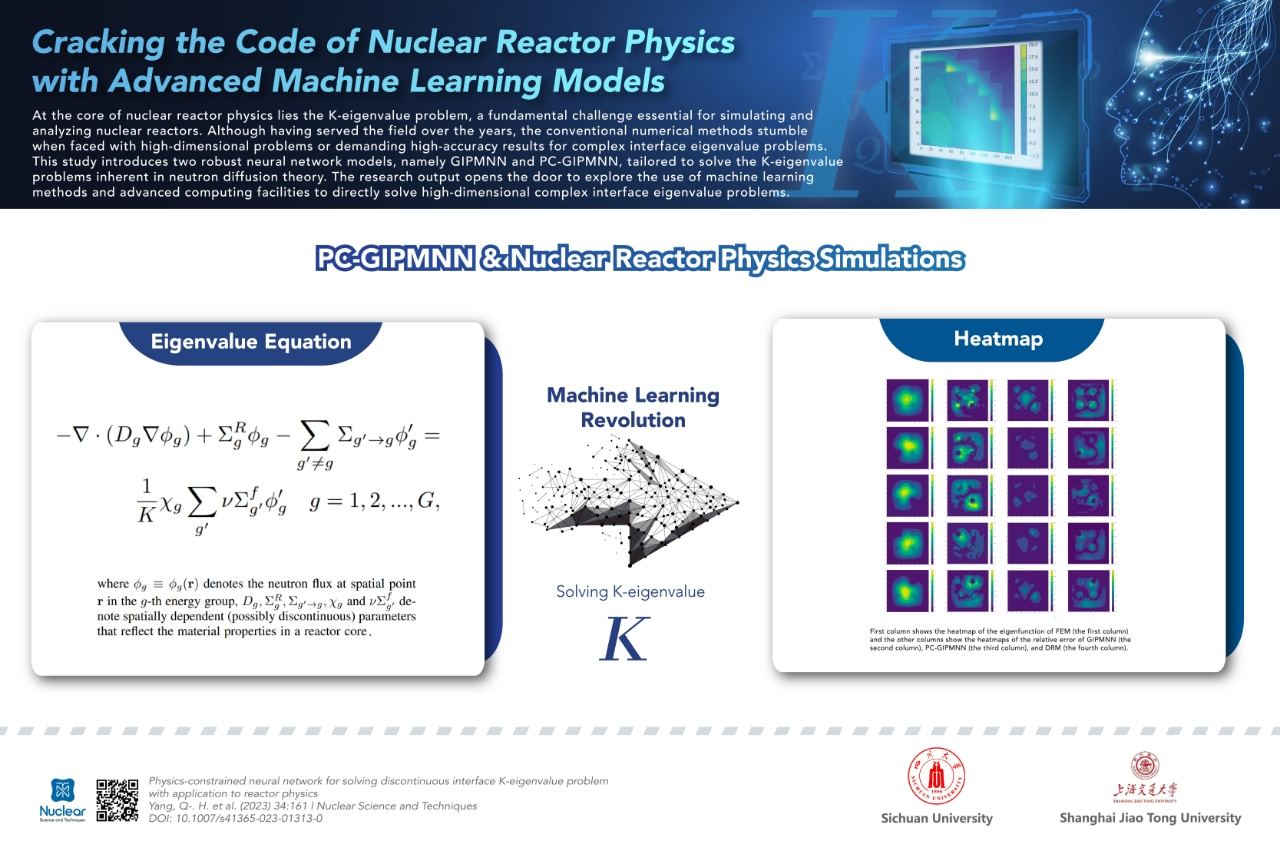Article title: Physics-constrained neural network for solving discontinuous interface K-eigenvalue problem with application to reactor physic
DOI: 10.1007/s41365-023-01313-0
One sentence summary:
Machine learning models, specifically the PC-GIPMNN, are revolutionizing nuclear reactor simulations, offering enhanced accuracy and efficiency, and paving the way for a sustainable energy future.
Keywords:
Neural network, Reactor physics, Neutron diffusion equation, Eigenvalue problem, Inverse power method
The Novelty
This study introduces two robust neural network models, namely Generalized Inverse Power Method Neural Network (GIPMNN) and Physics-Constrained GIPMNN (PC-GIPMNN), tailored to solve the K-eigenvalue problems inherent in neutron diffusion theory, which is a cornerstone in nuclear reactor physics. Falling under the domain of "Analysis and Application of Machine Learning Algorithms, this research led to the integration of nuclear engineering and advanced applied mathematics. Through a computational (in-situ) model, the study embarks on a comparative journey revealing that the PC-GIPMNN significantly outshines both GIPMNN and the existing deep learning methods for eigenvalue problem especially in managing two-dimensional scenarios and interface problems. The key findings underscore PC-GIPMNN's superior accuracy and stability in tackling these problems, making it a promising asset for complex nuclear engineering computations. This advancement opens up a promising avenue for further enhancements in machine learning applications within nuclear reactor physics, aiming to bring about a new era of efficiency and precision in nuclear energy simulations.
The Background
At the core of nuclear reactor physics lies the K-eigenvalue problem, a fundamental challenge essential for simulating and analyzing nuclear reactors. In simpler terms, it's a mathematical hurdle that, when resolved, provides critical insights into the behavior and safety of nuclear reactors.
Although having served the field over the years, the conventional numerical methods stumble when faced with high-dimensional problems or demanding high-accuracy results for complex interface eigenvalue problems. The thrust of this study is propelled by these existing limitations, offering a novel solution through the lens of machine learning. The proposed neural network models, GIPMNN and PC-GIPMNN, emerge as a significant stride towards bridging this knowledge gap. By leveraging the prowess of machine learning, these models herald a notable potential in not only addressing the immediate challenges but also setting a precedent for future explorations in nuclear reactor simulations and analysis.
The SDG impact
According to the International Energy Agency, nuclear power is pivotal in achieving low-carbon electricity generation. The urgency to improve the efficiency and accuracy in nuclear reactor simulations is a stepping stone towards a sustainable energy future. This research resonates profoundly with Sustainable Development Goal 7 (Affordable and Clean Energy) by pushing the boundaries in nuclear reactor physics through machine learning, aiming to enhance the efficiency and safety of nuclear energy. Furthermore, the potential of this research in fostering innovation aligns with Goal 9 (Industry, Innovation, and Infrastructure), paving the way for digital transformations in nuclear engineering.
Graphical Abstract



